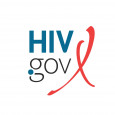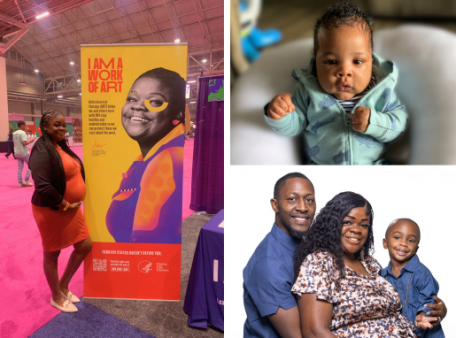“The updated HHS HIV clinical practice guidelines regarding breastfeeding [and chestfeeding*] provide options that didn’t exist before. I want to share information about the updated guidelines so individuals have support to decide what is best for them.” Ashley Cason, an “I am a Work of ART” campaign creative partner and HIV community advocate, shared this perspective with HIV.gov as we discussed her informed decision to breastfeed her second child, a boy, who was born in early November 2023. The revisions to the guidelines are one of the federal Ending the HIV Epidemic in the U.S. (EHE) initiative achievements and were made—with community input—by an expert panel in perinatal HIV.
In the past, HIV and public health guidelines discouraged infant feeding among postpartum people with HIV. However, in early 2023, a significant change occurred when the Perinatal HIV Clinical Guidelines were updated to reflect current knowledge about HIV transmission through expressed human milk and nursing. The updated guidelines on Infant Feeding for Individuals with HIV in the U.S. promote greater emphasis on informed, shared decision-making for parents with HIV who have a sustained undetectable viral load. To learn more about what an undetectable viral load means, read here.
Ashley’s Breastfeeding Journey
“I was born with HIV, but I wasn’t diagnosed until I was 15,” Ashley said. She shared that prior to her diagnosis, she felt great, didn’t have any symptoms of HIV, and wasn’t taking any medications. However, when she visited an emergency room after experiencing early symptoms, she received an HIV test, and she and her parents learned that she had HIV. Today, Ashley, who also has a 3-year-old son, is healthy and thriving thanks to advancements in HIV treatment.
“Because I have an undetectable viral load, that gives me an opportunity to have conversations with my health care provider about wanting to breastfeed my child. The possibility of me transmitting HIV to my child is very low, less than one percent,” Ashley said.
During her first pregnancy, breastfeeding wasn’t presented as an option, and she didn’t consider it. However, this time around, her health care provider gave her the motivation to consider breastfeeding, and they discussed the research of The Well Project, a nonprofit organization Ashley became interested in. The Well Project provided input and, along with several other agencies and partners, helped create the updated federal clinical guidelines, which it uses to inform its work focused on women and girls with and vulnerable to HIV. To learn more about The Well Project and its statement about the updated guidelines, click here.
“Everyone is so supportive of me wanting to breastfeed; my health care team and my husband, who is HIV negative, are standing behind me 110 percent,” she said. “It’s been our shared decision, and I’m so thankful that my medical team is aware of the updated guidelines.”
Ashley’s Message to Others with HIV
As we ended our conversation, Ashley shared a message for others living with HIV who want to breastfeed. “Fully advocate for yourself and for what you want to do with your child,” she said. “If you don’t have a team of health care providers who support you and are knowledgeable of the science and research that’s available, explore other options. You may have HIV, but it doesn’t have you!”
Check out the “I am a Work of ART” campaign page here to learn more about Ashley and others living healthy lives with HIV. We encourage you to read our other blogs about the updated clinical guidelines regarding infant feeding, which you can find here and here.
*Chestfeeding is a gender-inclusive term that may be preferred by trans and nonbinary individuals. Throughout this blog, chestfeeding may be used instead of or in addition to breastfeeding and infant feeding.
This blog post was published January 25, 2024, on HIV.gov.








Comments
Comments